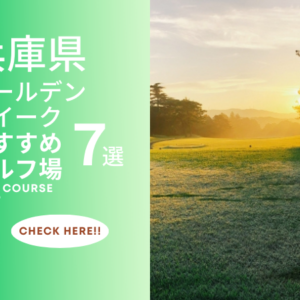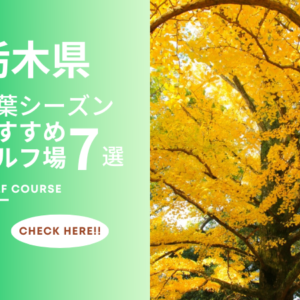Rabbit Road interface choices guiding safer decisions
Design That Shapes Every Decision
The interface of Rabbit Road is more than just a visual layout. It acts as the player’s compass in a game where timing and restraint decide everything. Every element on the screen — from the Cash Out button to the difficulty selector — serves a purpose. There are no flashing distractions or unnecessary animations. The space feels open, giving players a sense of calm before they make their next decision. This clarity is what separates Rabbit Road from most crash-style titles and shows how careful design can protect a player from impulsive play. The structure is simple, but the simplicity hides smart layers of user experience thinking.
When a player enters rabbit-road.nz, the first thing that stands out is how direct the interface feels. There are no side menus fighting for attention. The game invites focus. The main screen centers on the rabbit’s path, where movement and multipliers tell the whole story. Every decision is visual, immediate, and easy to grasp. The result is a design that turns complex risk calculation into an intuitive gesture. The absence of clutter allows players to engage deeply without overstimulation. The interface becomes a silent partner in every decision, quietly shaping how players approach risk.
InOut Games built Rabbit Road around the principle of awareness. The player must see the outcome of every choice clearly. That principle shows in the size of the buttons, the spacing between actions, and the soft transitions between rounds. The design rewards patience and balance. The focus remains on the moment, not the outcome. Even players new to crash games feel guided rather than overwhelmed. The structure of Rabbit Road’s interface transforms decision-making into something thoughtful, making each click a clear, considered act rather than an impulse.
Feedback That Keeps Control in Focus
Rabbit Road’s design relies on feedback that keeps players grounded. Every sound and movement is tuned for awareness rather than excitement. When the rabbit starts running, the animation flows smoothly, giving enough time for reflection. The growing multiplier appears in sync with the rhythm of the game, helping players sense progression instead of panic. The “caught” animation, with the hands reaching for the rabbit, acts as a firm but fair reminder that waiting too long carries risk. The goal is not to punish the player but to close the round with clarity.
The soundscape supports the same philosophy. Soft effects accompany every step, creating a pulse that mirrors a heartbeat under control. There are no aggressive jingles or endless loops. Instead, the sound fades at key points, allowing silence to do its job — to let players breathe and reset. This pacing is part of the psychological design that keeps sessions measured. Each round ends with calm energy, not chaos. The combination of visual rhythm and audio restraint keeps tension from turning into stress.
Visual simplicity also builds trust. The rabbit’s movement is consistent, never jerky or misleading. The background remains stable, avoiding the illusion of speed or pressure. Players can rely on what they see. This consistency reduces the mental load and helps players notice patterns in their own reactions. The feedback loop is always visible and predictable. The absence of randomness in presentation makes the experience feel fair, even when luck decides the outcome. The overall design teaches focus through repetition and reassurance.
Interface Tools Supporting Safer Play
Rabbit Road includes small but powerful tools that support safer gaming habits. The difficulty selector lets players adjust volatility according to comfort. Easy mode offers slow growth and frequent wins, while higher levels add speed and tension. This control turns risk management into a deliberate act. Players can experiment, reflect, and adapt without external pressure. The clear display of difficulty creates a dialogue between player and system, where responsibility lies in choice.
The Cash Out button is the emotional core of Rabbit Road. It sits large and visible, a single decision point that defines the entire experience. Clicking it means choosing safety over greed. Its responsiveness gives immediate feedback, confirming that timing matters more than luck. Players learn through repetition that restraint leads to longevity. The simplicity of this mechanic, presented without delay or complexity, transforms self-control into a satisfying moment of mastery.
Other interface options like history tracking, sound toggles, and settings strengthen this responsible framework. The history tab shows recent multipliers, offering insight without temptation. Sound and visual settings allow players to tailor focus. These elements work together to create an environment where the user feels in charge. Nothing is hidden or automated. Each round starts with intention and ends with reflection. This transparency makes Rabbit Road stand out as a game designed not only for fun but for conscious play.
Where Psychology Meets Smart Design
Rabbit Road’s success lies in its understanding of human psychology. The interface shapes how players think about timing, risk, and reward. By slowing visual pace and simplifying options, it reduces cognitive overload. The design acknowledges that players make better decisions when the environment is calm. This balance between stimulation and space keeps the game engaging but never manipulative. It turns each round into a dialogue between impulse and awareness.
Psychology and design merge most clearly in the flow of play. Each session starts small and grows through rhythm. The visuals and mechanics align with natural human patterns — anticipation, hesitation, release. Players learn to read subtle cues, like the rabbit’s stride or the tone of a sound effect, as emotional signals. This creates a feedback loop where attention sharpens and reaction time improves. Rabbit Road uses this loop not to trap players but to empower them. The structure builds confidence instead of dependency.
By giving users both freedom and responsibility, Rabbit Road turns game design into a form of guidance. The interface doesn’t lecture or warn, but it quietly leads toward balance. Every round is a reminder that awareness matters more than speed. The mix of visual honesty, measured feedback, and intuitive controls demonstrates how ethical design can make crash-style games safer without losing excitement. Rabbit Road shows that fun and mindfulness can coexist — and that good design can teach better habits one click at a time.











この記事へのコメントはありません。